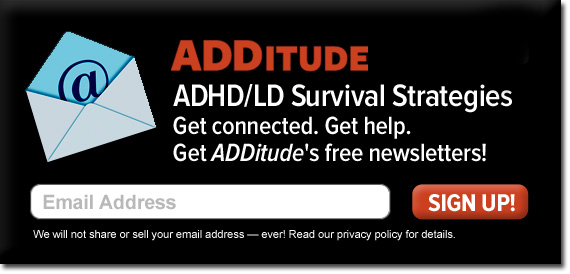You make adjustments to your or your child’s diet every time a new study touts the health benefits of this food or that nutrient. First, you included more protein with breakfast, then you introduced omega-3 fatty acids.
Now, just as you’re savoring your successes, the latest research suggests that low levels of iron can worsen attention deficit hyperactivity disorder (ADHD) symptoms.
You know how important iron is to the body, carrying oxygen to the muscles and organs. But it also plays an important role in the brain, affecting production of the key neurotransmitter, dopamine.
What does this mean to you or your child? Read on. We’ll help you figure out if you're getting enough of this vital mineral.
Low Iron and ADHD
When you think of someone who is iron deficient, you envision a person who is pale and tired — not a hyperactive child, bouncing off walls. Well, think again. A 2004 study, published in the Archives of Pediatrics and Adolescent Medicine, found that 84 percent of children with ADHD had significantly lower levels of iron, compared with 18 percent of kids without ADHD. The lower the levels of ferritin — a protein found inside cells that store iron — the more severe the symptoms.
A small study, published this year in Pediatric Neurology, showed that symptoms improved when iron-deficient children with ADHD took an iron supplement.
Low iron may also be a factor in Restless Legs Syndrome (RLS), a condition often found in ADHD children or adults that causes an uncomfortable tingling or crawling feeling in the legs, affecting the ability to get to sleep. In 2003, the journal Sleep reported that giving iron supplements to children with both RLS and low iron stores improved symptoms.
If you suspect you or your child have low levels of iron, talk with your doctor about doing a ferritin test (see “Low-Iron Indicators,” left). Never start iron supplements without a blood test and your doctor’s approval. Too much iron can block the absorption of zinc, copper, and manganese. Keep iron supplements out of the reach of small children.
More-Iron Strategies
Diet, not supplements, is the safest way to increase iron levels.
So-called heme iron, contained in animal products, like meats, poultry, and fish, is absorbed much more efficiently than non-heme iron, found in fortified cereals, whole grains, vegetables, legumes, and some fruits. You can increase iron absorption by serving these foods with those high in vitamin C — orange or grapefruit juice.
Iron-rich foods include:
- Cheerios (1 cup), 8 mg. iron
- Wheaties (1 cup), 4.5 mg.
- beef pot roast (3 oz.), 2 mg.
- turkey (dark meat; 3 oz.), 2 mg.
- tuna (3 oz.), 1.9 mg.
- peas (1/2 cup), 1.8 mg.
- hamburger (lean, 3 oz.), 1.8 mg.
- egg (1 medium)
- 1.1 mg.; chicken (1 drumstick), 1 mg.
- banana (1 medium), 0.9 mg.
- baked potato (1 medium), 0.7 mg.
- peanut butter (2 tbsp.), 0.6 mg.
- whole-wheat bread (1 slice), 0.5 mg.
Limit the servings of dairy products when serving iron-rich food. Calcium interferes with the mineral’s absorption. Two to three servings of dairy a day for kids ages four to eight, and four servings for adults and children nine to 18, can supply enough calcium without compromising iron absorption.
While double-blind studies using larger populations need to be done to confirm iron’s effect on ADHD symptoms, in the meantime, eating more iron-rich foods can only benefit your or your child's mental and physical health.
This article comes from the Fall issue of ADDitude.
To read this issue of ADDitude in full, SUBSCRIBE NOW!




